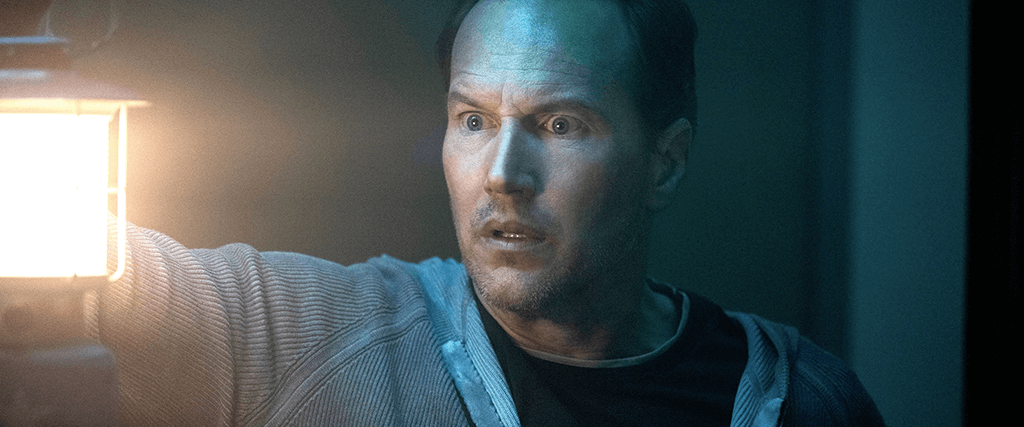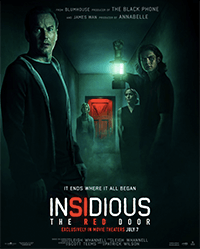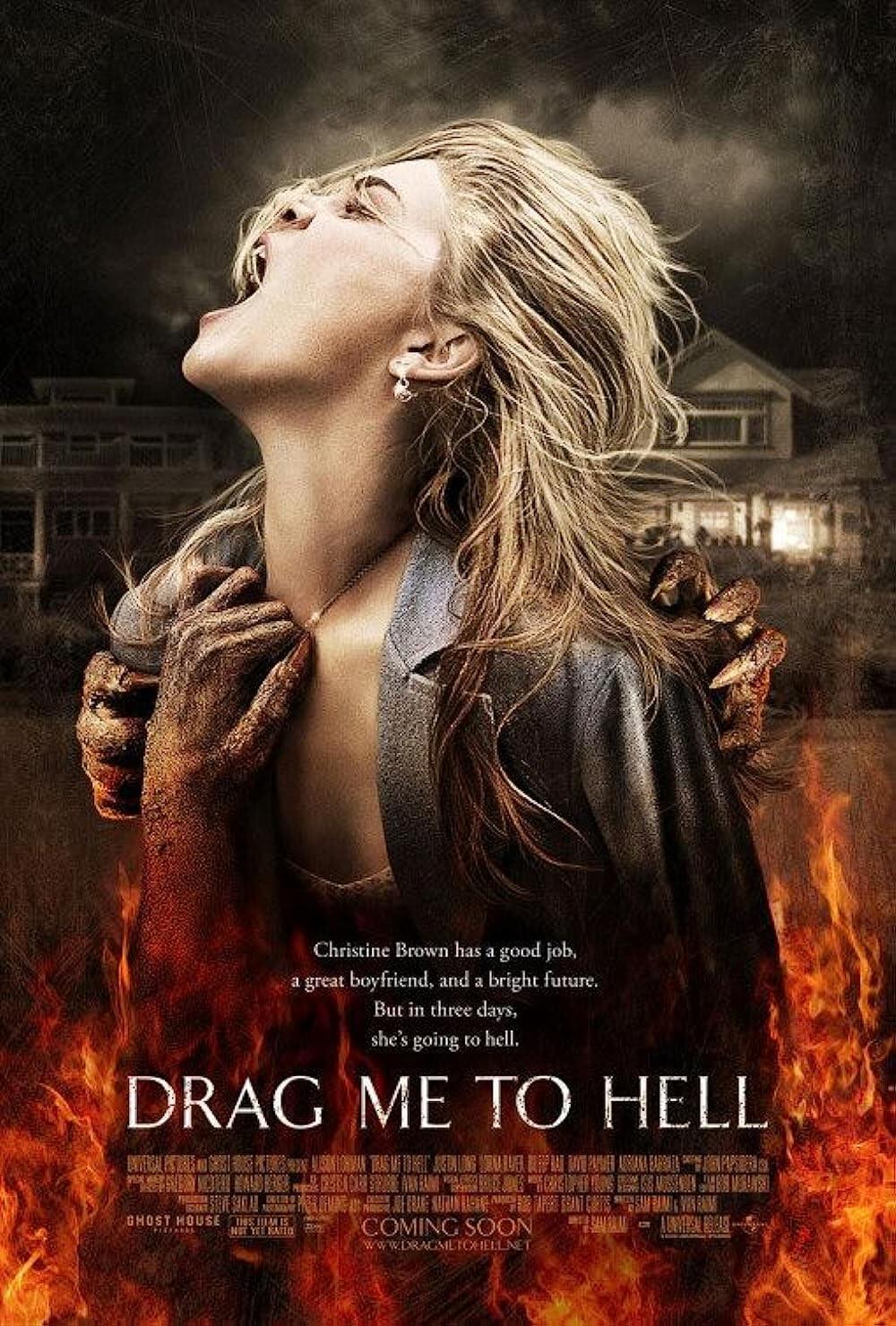Reader's Choice

Insidious: The Red Door
By Brian Eggert |
Blumhouse’s Insidious is grasping for dear life in the fifth installment, Insidious: The Red Door. Supposedly the final entry, the sequel marks the directorial debut of Patrick Wilson, who starred in James Wan’s original Insidious from 2010 and 2013’s Insidious: Chapter 2. A decade has passed since the Lambert family closed the book on “The Further,” where Wilson’s character, Josh, and his son Dalton (Ty Simpkins), could astral project themselves, drawing all manner of nasties to their presence. But after surviving the malignant force, Josh and Dalton had all memories of their journey to the other side suppressed. Their story seemed to have ended happily ever after, sending the series into prequel mode. Insidious: Chapter 3 (2015) and its sequel Insidious: The Last Key (2018) supplied backstories to flesh out the first two, setting aside the Lamberts in favor of Lin Shaye’s memorable medium Elise and her chummy, ghost-hunting cohorts, Tucker (Angus Sampson) and Specs (Leigh Whannell). But The Red Door brings the Lamberts back for a final nightmare in The Further, retreading familiar territory.
Keeping track of this series—especially when Wilson stars in New Line Cinema’s The Conjuring Universe, another supernatural horror series launched by Wan in 2013—proves a tricky task. Both the Insidious and The Conjuring franchises boast sequels, prequels, and spinoffs, vast networks with uneven results. Although The Conjuring represents the more commercially and artistically successful of the two, Blumhouse has a track record of beating franchises into the ground (see the various Paranormal Activity and The Purge sequels). Screenwriter Scott Teems, who conceived The Red Door’s story with series writer and star Whannell, combats the entrenched mythology by delivering a sequel that doubles as an entry point. The result is a movie that might please those unversed in Insidious lore but will probably feel redundant for those like me, who have spent hours watching this underwhelming series only to have it double back.
The story finds Josh divorced from his wife, Renai (Rose Byrne), who smartly left him after the events in Chapter 2. (After all, how can you trust a husband who chases his family around the house with a hammer, even if he is possessed by a spirit from The Further?). In the years since, Josh’s mother Lorraine (Barbara Hershey, onscreen only in photos) has died, leaving him with a decade-long brain fog and lingering questions about his past, resulting from the hypnotic suggestion that suppressed any knowledge of The Further. Meanwhile, his relationship with his now-teenage son, the moody and unfun Dalton, is strained. After Dalton arrives at art school, he expresses his repressed trauma by painting grim images of a red door floating in a black netherworld he doesn’t remember. Indeed, both Josh and Dalton feel something’s missing from their past, and it takes The Red Door a good hour or more before they recall the events from the first two movies, (re)discover The Further, and once again meet the vicious demon that awaits them inside. It’s a slow, plodding journey for Josh and Dalton to remember what everyone who has seen Insidious and its sequel already knows, and that’s a narrative miscalculation that forces the audience to wait far too long for the characters to catch up.
Meanwhile, much of the runtime deals with Josh lamenting how he has repeated the mistakes of his absent father, while Dalton’s gloom receives a jolt of energy thanks to Chris (Sinclair Daniel), a plucky young woman assigned to be his roommate by mistake. But not even Chris can improve on Dalton’s downer personality. Both men also look for answers. Josh seeks medical help, and a sequence inside an MRI exploits the viewer’s claustrophobia, delivering the movie’s one genuine scare. Dalton looks for therapy in his art, guided by an art teacher (Hiam Abbass) who teaches painting the way Stanislavski taught acting. All the while, the dour tone feels accentuated without Elise, a lively presence who died in the first movie. But that doesn’t prevent her from showing up in every sequel or prequel since, usually alongside Tucker and Specs. Here, they appear in a brief YouTube video, if only so Shaye can give her intense description of The Further as “a dark realm filled with the tortured souls of the dead… doomed to live their worst sin over and over and over again.”
Wilson’s horror credentials go deep, and he applies what he’s learned in this freshman directorial effort. Strange figures move out of focus in the background, unreliable lights flicker at night, idiotic teens hide under the bed, contorted ghosts creep out of the dark, and Tiny Tim’s “Tiptoe Through the Tulips” unnerves on the soundtrack. It’s all familiar stuff, handled confidently enough but without any inspired or particularly noteworthy innovations. The cinematography by Autumn Eakin is competent and dark, but she finds little beauty in grave images, as Wan’s Insidious entries often did. Rather, Wilson and Easkin merely attempt to replicate haunting sights from the original—such as the demon resting just behind its victim, its red face a stark inclusion in the otherwise blue-gray proceedings—furthering my suspicion that The Red Door operates more like a soft reboot than Chapter 5. All of this might be forgivable, except the movie drags and remains unscary.
The Red Door has a been-there, done-that quality, including its tired motif about confronting trauma—the theme of every other horror movie these days. Worse, Teems’ script gets heavy-handed with the message. Note how Dalton’s dialogue sounds culled from a group therapy session: “We need to remember. Even the things that hurt.” This is not to suggest horror films cannot do trauma well or that trauma is somehow an invalid emotion for cinema. See everything from Nicholas Roeg’s Don’t Look Now (1973) to Ari Aster’s double feature of Hereditary (2018) and Midsommar (2019) for proof otherwise. But far too many horror films have decided the genre is a space for healing through the metaphor of supernatural or nightmarish conflicts. Relying on cheap scares and an overdrawn plot, The Red Door doesn’t stand out among them and never restores interest in this meandering franchise.
(Note: This review was originally suggested and posted to Patreon on July 13, 2023.)

Thank You for Supporting Independent Film Criticism
If the work on DFR has added something meaningful to your love of movies, please consider supporting it.
Here are a few ways to show your support: make a one-time donation, join DFR’s Patreon for access to exclusive writing, or show your support in other ways.
Your contribution helps keep this site running independently. However you choose to support the site, please know that it’s appreciated.
Thank you for reading, and for making this work possible.
Brian Eggert | Critic, Founder
Deep Focus Review







